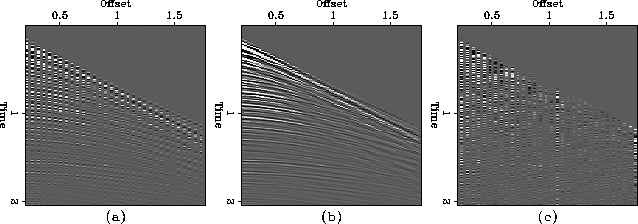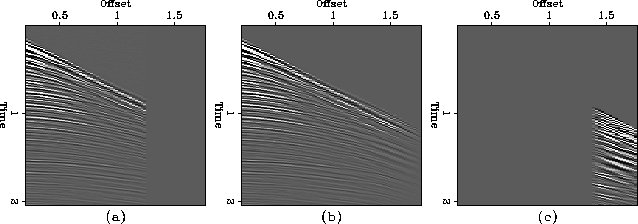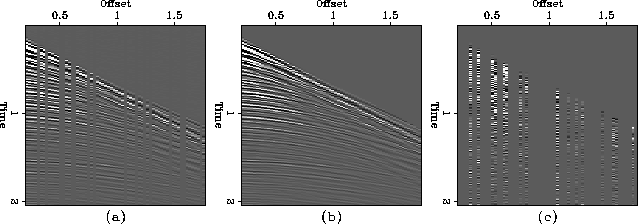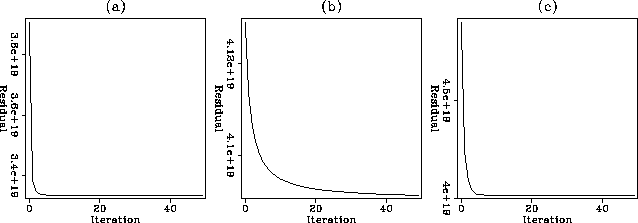




Next: CONCLUSION
Up: Ji and Claerbout: Trace
Previous: NMO CORRECTION AND SPECTRA
Interpolation of missing traces is carried out iteratively
using a conjugate-gradient algorithm, which minimizes the
high-dip-pass-filtered output of NMO-corrected CMP gathers.
Finally, inverse NMO processing is applied with the same
velocity as was used in the NMO correction.
To preserve the amplitude of the original data, we use
pseudounitary NMO processing (Claerbout, 1991).
In order to test the validity of the proposed method,
it has been applied to several sets of synthetic and real data.
Figure 4 shows a synthetic CMP gather with interlaced missing traces,
the result of interpolation, and the difference between the
original traces and the interpolated traces.
Similarly, Figure 5 shows a synthetic CMP gather with truncation at the end,
the result of interpolation, and the difference between the original traces
and the interpolated traces.
In Figure 6 a synthetic CMP gather with random missing traces is shown,
along with the result of interpolation and the difference between the
original traces and the interpolated traces.
fig4
Figure 4 (a) Synthetic CMP gather
with interlaced missing traces, (b) the result of interpolation, and (c)
the difference between original and interpolated traces.




 fig5
fig5
Figure 5 (a) Synthetic CMP gather
with truncation at the end, (b) the result of interpolation, and (c)
the difference between original and interpolated traces.




 fig6
fig6
Figure 6 (a) Synthetic CMP gather
with randomly missing traces, (b) the result of interpolation, and (c)
the difference between original and interpolated traces.





Figures 7, 8 and 9 show the processing of a real dataset.
The data set, wz27 (Yilmaz and Cumro, 1983), has been windowed to provide
a small test dataset. Normal moveout was applied to the data using water
velocity, making most events reasonably, but not perfectly, flat.
Figure 7 shows the results of interpolating the dataset when
odd-number traces were zapped to produce missing traces.
The difference between the original traces and interpolated
traces is also shown.
Figure 8 shows the result of the interpolation and the interpolation
error for a truncated CMP gather.
Figure 9 shows the result of interpolation for random missing traces.
fig7
Figure 7 (a) Real CMP gather
with interlaced missing traces, (b) the result of interpolation, and (c)
the difference between original and interpolated traces.




 fig8
fig8
Figure 8 (a) Real CMP gather
with truncation at the end, (b) the result of interpolation, and (c)
the difference between original and interpolated traces.




 fig9
fig9
Figure 9 (a) Real CMP gather
with randomly missing traces, (b) the result of interpolation, and (c)
the difference between original and interpolated traces.





Figure 10 shows residuals as a function of the iteration number for
the three missing trace types.
We see that all cases converge very fast, and that interlaced and random
missing traces converge in just a few steps.
fig10
Figure 10 Residuals with respect to
iteration for (a) interlaced missing traces, (b) truncation at the end,
and (c) randomly missing traces.






Next: CONCLUSION
Up: Ji and Claerbout: Trace
Previous: NMO CORRECTION AND SPECTRA
Stanford Exploration Project
12/18/1997







